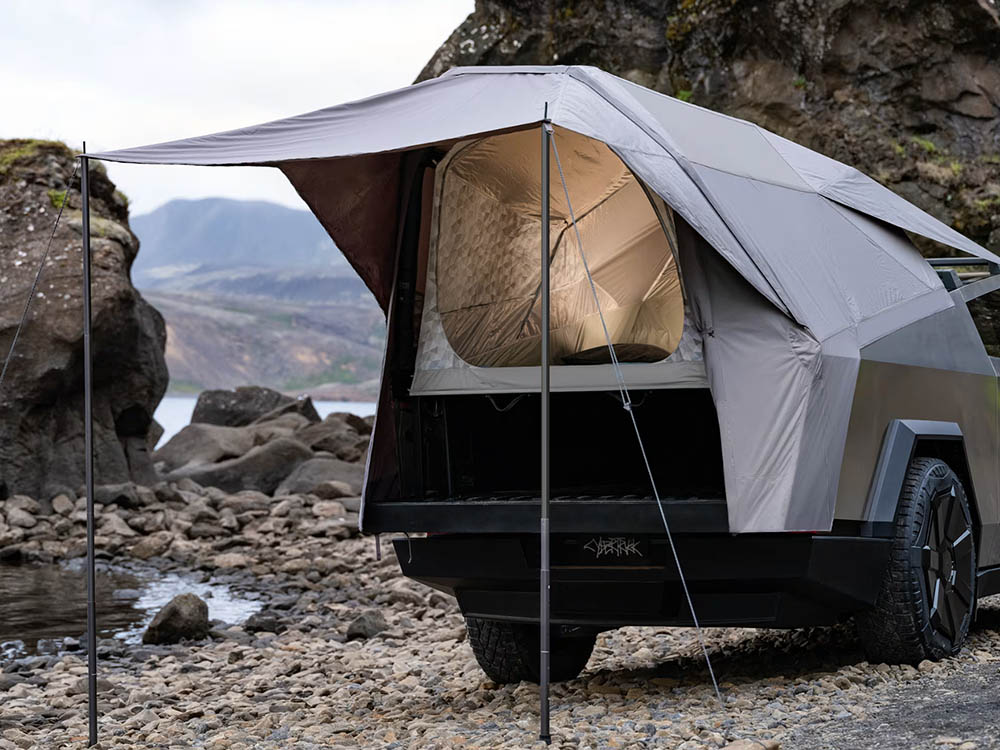Without a doubt, the most useful piece of equipment that you can take with you into the backcountry is a quality knife. From cutting paracord to shaving kindling for a fire to slicing veggies for your camp meal, a knife is an invaluable tool that should never leave your side.
Depending on the type of adventurer you are, you may lean towards a kitchen knife for meal prep, a multi-tool clipped to your pocket for quick cuts and campsite fixes, or a fixed blade that’s dedicated to general camp tasks.
No matter which type of knife you choose to carry, it’s critically important to keep it sharp. Not only will it perform better when you need it most, but a sharp knife is significantly safer than a dull one. This may seem counterintuitive, but when you’re fighting a dulled edge, you’re more likely to use more body weight to force the knife or forget safe-cutting practices. Simply put, a dull knife can lead to more injuries because you’re putting more force into the cut. If the knife slips, it could be disastrous.
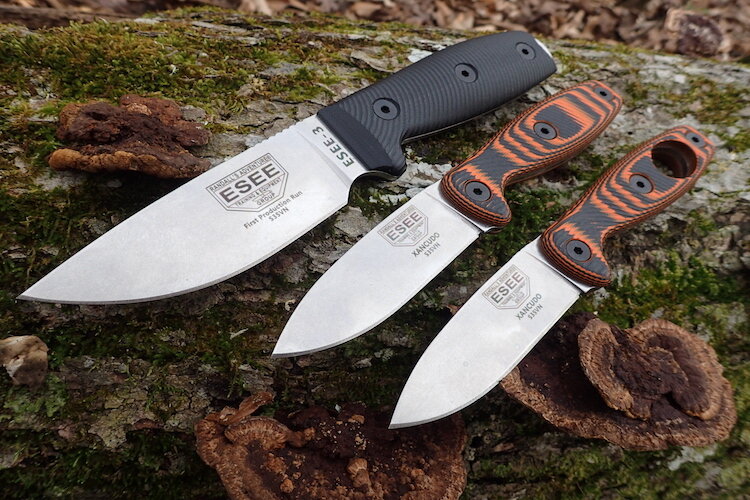
Maintaining your knives, just like any other piece of equipment, takes a bit of know-how. Once you have the knowledge and a bit of equipment, you’ll just need to practice your sharpening skills. Before you know it, you’ll be able to bring a blade back to factory sharpness or even better.
First, you’ll want to clean your knife to remove any dirt, debris, sap, resin, or strange residues that might be on your blade. Dish soap, water, a sponge, and a toothbrush will take care of most dirt and residue.
After scrubbing, rinsing, and drying the knife, you can check for rust or stains. Some steels, particularly those with high carbon content, can corrode or stain. Obviously, you’ll want to remove any rust, but most stains aren’t harmful to the steel, and over time, the knife will gain a patina.
READ MORE: Editors’ Choice: Overland Lighting
Getting to Know Your Grind
When you sharpen your knife, you’ll want to match the grind angle and style as much as possible. If you imagine the line through the center of the blade as 0 degrees, then a thin knife that’s intended for slicing would have an edge angle somewhere between 5 and 10 degrees. The edge of a general-purpose pocket knife would most likely be 15 to 20 degrees, and blades intended for chopping wood or heavy work would be higher than 20 degrees.
Many high-end sharpeners have degree settings, but even if you don’t use this method, being aware of the edge geometry will help properly sharpen your blade.
Next up is to have the right tools to make sharpening your knife easier. I’ll outline a few tools you can use to achieve superior sharpness on your blade.
Whetstones
Whetstones are a cost-effective way to keep your blades sharp. These stones are unguided, so it is important to hold your blade at a consistent angle while you’re sharpening so it doesn’t get waves in the edge.
Smith 6-inch Three Stone Sharpening System
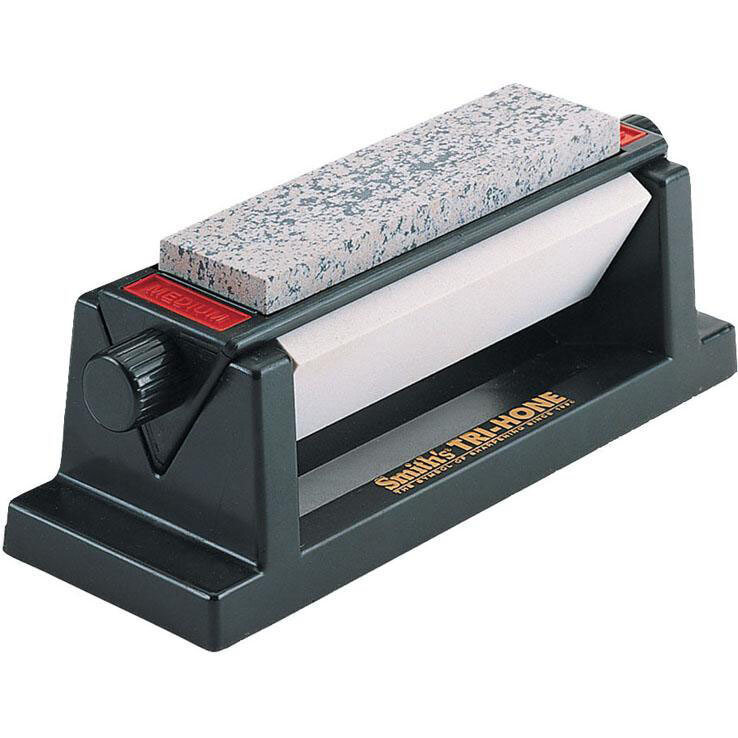
The Smith 6 Three Stone Sharpening System features a 6-inch, Medium Arkansas Stone, 6-inch Fine Arkansas Stone, and 6-inch Coarse Synthetic Stone mounted on a molded plastic triangle with handles on the end for easy stone rotation. The sturdy molded plastic base has non-skid rubber feet for safety, a “V” trough to catch the oil drippings, and is easy to clean. A bottle of Premium Honing Solution and a sharpening angle guide are also included.
MSRP $35.97
DMT 3 6-inch Diamond Whetstone Sharpeners with Hardwood Box
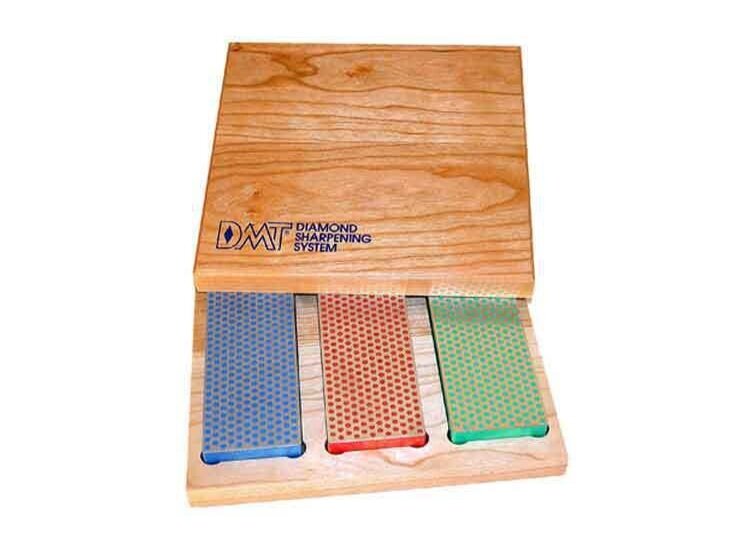
DMT’s 3- 6-in. Diamond Whetstone sharpeners come in a handy hardwood box. One of their most popular sets of sharpening stones, this box fits well at home, in your overland rig, or camper, offering a sharpening surface to satisfy a variety of edge care needs. Extra-Fine diamond (9 micron / 1200 mesh) to polish and refine a razor edge after sharpening with a coarser diamond. Fine (25 micron / 600 mesh) for a razor-sharp edge; Coarse (45 micron / 325 mesh) to quickly restore a neglected edge. Best of all, you can use these stones wet or dry.
MSRP $99.97
Other Sharpening Tools
A guided sharpening tool is designed to hold your blade at a consistent angle while you sharpen it, ensuring an evenly sharp blade. These compact tools allow you to sharpen your blades anywhere with ease.
Benchmade Guided Field Sharpener

The Guided Field Sharpener is a great compact sharpener packed with features. With coarse and fine diamond plates, a ceramic honing rod, and a leather strop, you can bring a dull blade back to shaving sharp. The built-in 20-degree angle guides ensure a consistent bevel angle across the entire edge of the blade. Not only can you sharpen your knife in the field, but you can also sharpen scissors, fish hooks, broadheads, and more.
MSRP $45.00
READ MORE: Review: Super Pacific X1 Rack And RTT
Sharpening Other Tools
Just as a sharp knife cuts best, make sure your other tools are well-maintained. Many overlanders carry axes and saws, and those are the types of tools that you want to work well when you need them. Saws can be tricky to sharpen, but axes and hatchets use many of the same principles as knives. While you can use a smaller sharpening tool on an ax, a dedicated ax sharpening stone will make the process quicker and safer.
Straight Grain Supply Dual-Grit Axe Sharpening Stone
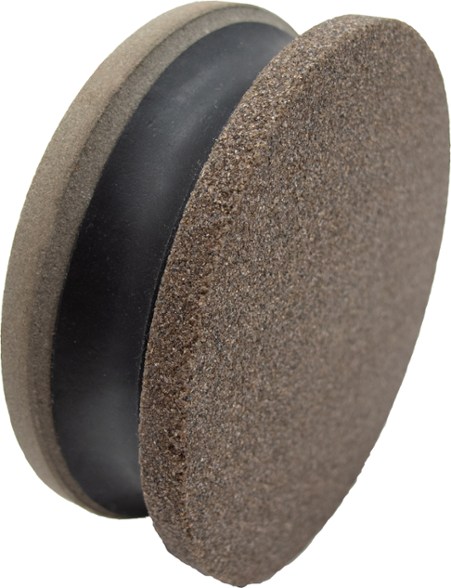
A dedicated axe sharpener like this one from Straight Grain Supply offers several benefits over other methods of sharpening an ax. The increased surface area will help you sharpen a large edge quickly. The finger grooves provide an excellent grip and keep your hand away from the edge. One side is rated at 80 grit so that you can quickly remove material to repair chips and dings, and the other side is 200 grit for refining the edge.
MSRP $39.00
The Leading Edge
How do you know when you need to sharpen your blade? Use the paper test. A sharp blade should be able to slice through paper without any tearing or hang-ups. If a certain spot on your blade causes tears and hang-ups, that’s the area you want to pay attention to when you sharpen it.
Always begin with the coarsest-grit stone and then progress to fine-grit stones to fine-tune your edge. You may not need the coarsest grit each time you sharpen if your blade is in good condition and you take care of it. Coarse grits are for burrs, and fine grit stones are for honing. If your blade is in good condition, simply honing it will keep it in fine cutting form for many years to come.
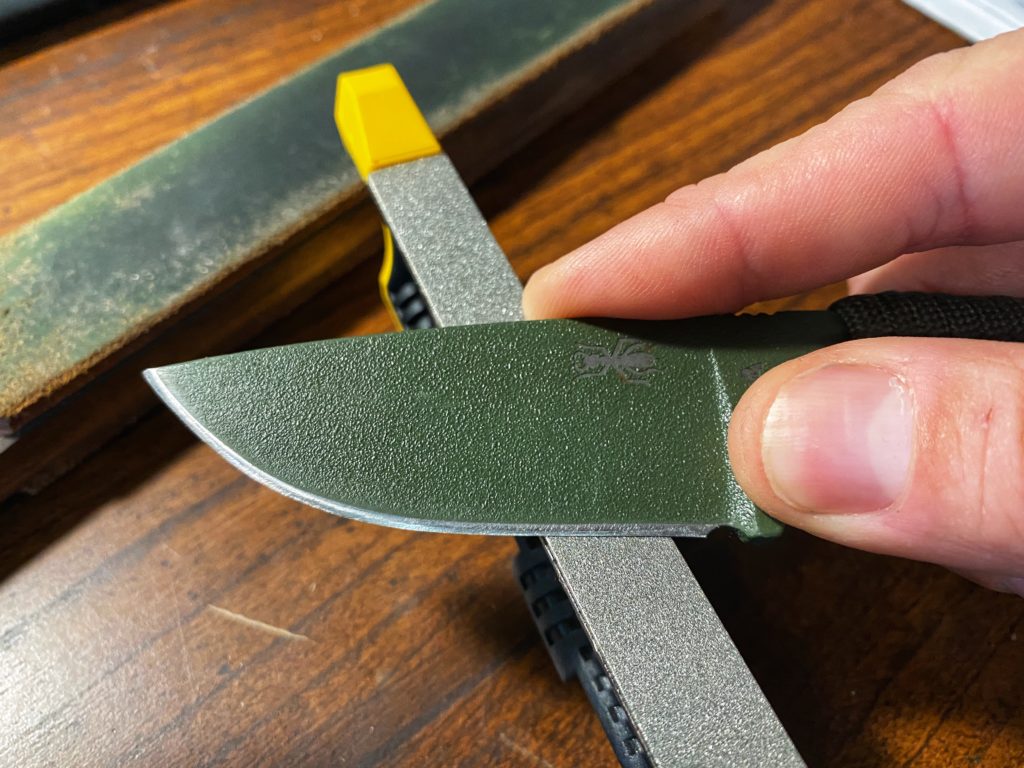
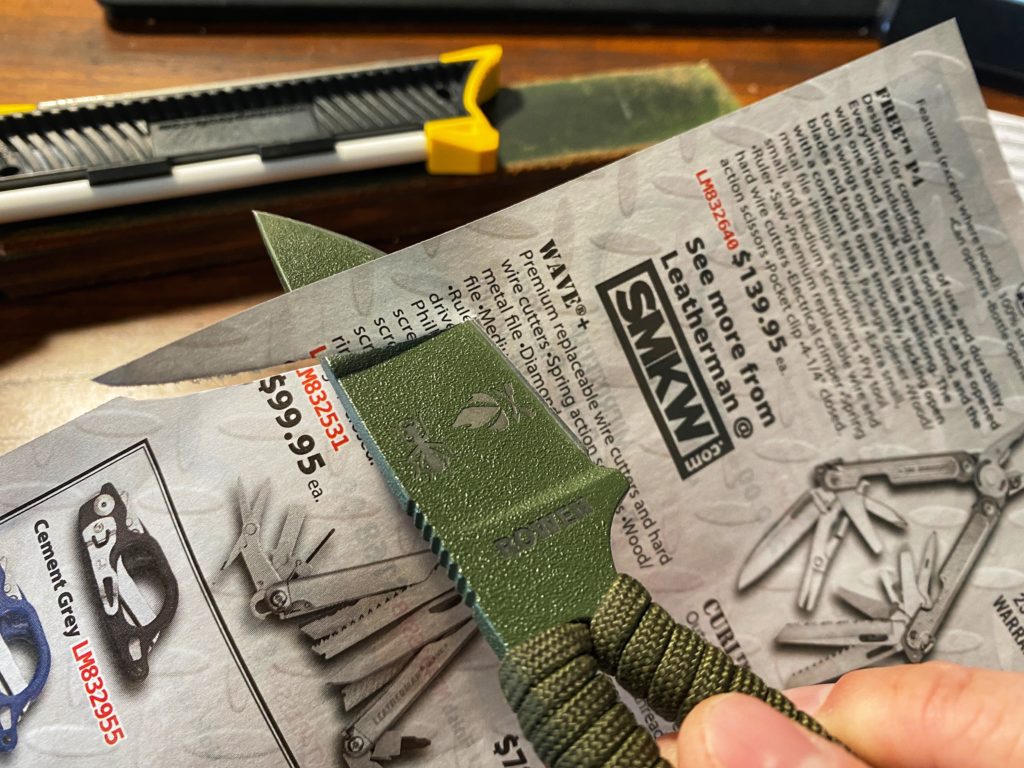
Start at the top of the stone and drag it lightly along the blade (following the angle) for three to five strokes until you feel a burr form. Then, flip the knife over and drag it three to five times on the other side of the edge. Check your work on scrap paper and fix any trouble spots. Rinse and repeat as necessary.
You might find that some knives are easier to sharpen than others. It’s also likely that the knife that is easiest to sharpen needs to be sharpened the most. This is because different steels have different levels of hardness. This is indicated by their Rockwell scale reading. For example, a knife with a Rockwell reading of 55 will need to be sharpened relatively often to maintain a fine edge. At the same time, that blade will be very resilient in terms of bending and flexing the blade. An identical knife, except with a Rockwell score of 60, will hold an edge longer, but it won’t be able to flex as much before breaking. Again, this goes back to knowing the intended use of the specific knife.
As with most things, it’s better to maintain an edge than totally rework it when it’s duller than a butter knife. Leather strops and ceramic honing rods are great for quick maintenance and for keeping your edge at its highest performance level.

